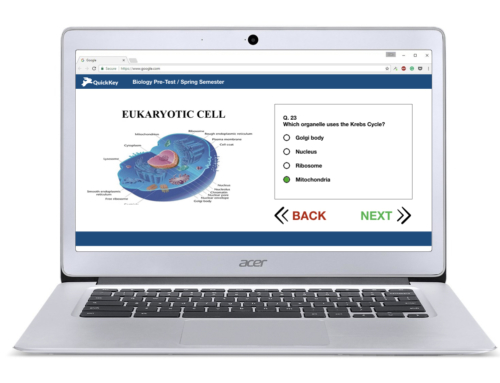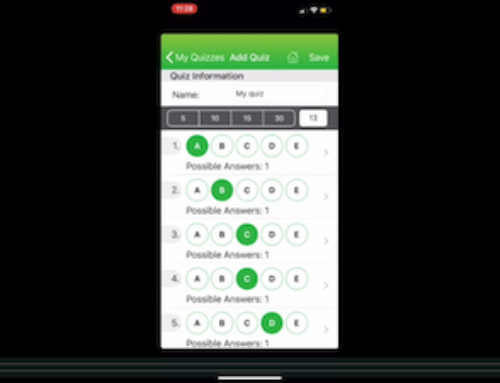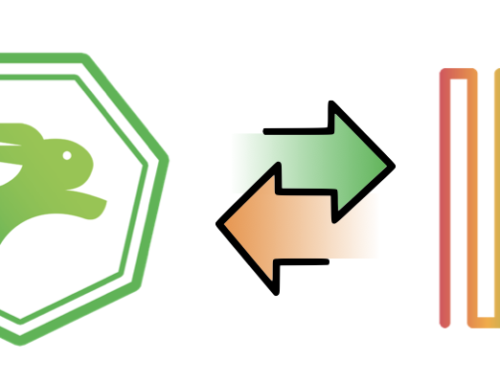Where do we want to be at the end of the school year?
As a school leader, you might be inclined to answer this question in an aspirational way, perhaps something like “With all of our students achieving their full potential.” But there is another way to frame an answer to this question, such as “With all of our students being proficient in these twenty-four English Language Arts curriculum standards, and able to demonstrate that proficiency on the state exam.”
This second answer – while it may be a bit narrow in that there is a lot more to learning than standards – it contains specific, actionable goals. In this respect, the second way to answer the question “where do we want to be at the end of the year” serves a useful purpose for all of a district’s or school’s stakeholders. In the last six years I have seen dozens of school and district leaders take action on clearly-defined goals such as these and achieve remarkable and consistent success. Best of all, each of these organizations is using the same basic instructional plan template, which I call a classroom assessment cadence.
Districts and schools are successfully using the classroom assessment cadence pattern to improve teaching and learning.
By using this pattern they have been successful in impacting student achievement numbers that matter to them, such as:
- Student scores on state exams
- Graduation and truancy rates
- Achievement gaps between different demographic groups
What is a classroom assessment cadence?
A classroom assessment cadence is really nothing more than a prescribed and planned set of short (3-10 questions) in-class assessments that adhere to these minimum requirements:
- Aligned to learning objectives such as state or Common Core standards, or specific learning goals defined by the curriculum
- Given on a daily, weekly or (at least) bi-weekly basis
- Given using a digital system that provides a report and an analysis to both teacher and student, immediately
- Used as a tool to guide further remedial instruction for students who need help reaching proficiency on the assessed standard or goal
A classroom assessment cadence has to start with creating a specific set of end goals: where do we want to be at the end of the semester, in terms of standards or learning objectives? Then, the planned curriculum must be mapped to those end goals, and then a series assessments is mapped to both the lessons and the end goals (a cadence). Teachers don’t need to teach the exact same way, and in theory they don’t even need to teach all the lessons in the same order. But it is best when all teachers are teaching the same standard or goal each week. A good cadence also has to involve frequent-enough assessment and preferably re-assessment as well. At the most basic level, the assessments in a classroom assessment cadence must provide teachers and students regular feedback they can use to catch up and master the goal before moving on to the next component of the curriculum.
I have seen many schools and districts use the assessments in their cadence in more advanced ways as well. For example, several of our partners have used this pattern and the actionable data it produces for student engagement, social emotional learning, teacher improvement, and family engagement.
Here is a simplified drawing of what a semester-long weekly cadence looks like:

An example classroom assessment cadence using weekly standards-aligned assessments.
Do your curriculum vendors, LMS, or SIS support classroom assessment cadences?
In short, probably not! You can find curriculum-aligned assessments everywhere these days, and your own curriculum vendors likely have provided you with assessment questions for each lesson. However, while these questions do fulfill one of the requirements for a Classroom Assessment Cadence by being linked to the curriculum topics your teachers teach, they often don’t fulfill all of the other requirements, such as being aligned to standards or being deliverable within a digital platform that provides instant feedback to students at their desk.
Likewise, while districts often provide some kind of item bank and assessment tool via the SIS or LMS, these tools and item banks are intended for larger, higher-stakes assessments and are often a poor fit for the frequent assessments of a classroom assessment cadence.
How do I build my own classroom assessment cadences?
While it is possible for teachers to have success by creating their own cadences, classroom assessment cadences are best when they are planned by leadership in collaboration with teacher leaders in each department. In my experience, a small team that includes an instructional leader and at least one data-oriented teacher can create an effective classroom assessment cadence for a given grade level and subject. Here are the steps:
- Find a top teacher and pair them with an instructional coach to make the cadence.
- Make sure all of the teachers of a given curriculum know that a classroom assessment cadence is being created, and invite their input.
- Gather the curriculum resources and any pacing information or planning that has already been done. Usually, the teacher will already know which goals or standards s/he plans to teach each week.
- Using questions provided by the curriculum, by the teacher, or from an item bank, create 5-10 question assessments for each week’s material. Load these assessments into an easy to use classroom assessment tool that every teacher can use without hassle, and that also provides feedback directly to students in real-time. This tool should also be able to distribute the assessments to all of the teachers who will be using it, and allow for roll-up reporting for leadership.
As simple as these steps are, they are often difficult to complete. For many schools, creating a good set of classroom assessments is not easy, especially if you don’t have access to standards- or goal-aligned questions that are also on the topics being taught. Service providers like Validated Learning specialize in creating the assessments that make up a classroom assessment cadence.
How can I make classroom assessment cadences work for my school or district?
Once you have built a classroom assessment cadence, making it work for your school or district does require change management steps toward data-driven instruction from leadership and more than a little buy-in from teachers. If you are like most education leaders and your plate is already overflowing, you might want to leave the idea of classroom assessment cadences in your “to-do” pile. But there is an alternative to waiting: services like those from Validated Learning are available and provide a wrap-around solution including teacher P.D., coaching, and help with actually planning and building the assessments, including the creation of assessment questions. Contact us to learn more.





